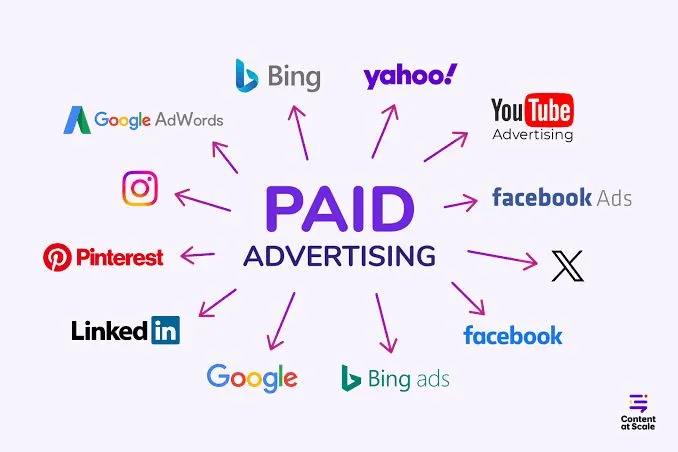In the bustling realm of digital marketing, social media stands out as a formidable platform for building brand awareness, driving engagement, and boosting sales. For businesses and entrepreneurs, the challenge lies not just in leveraging these platforms but in mastering strategies that allow them to stand out from the competition. Social media marketing decoded is about understanding and implementing strategies that outshine competitors, engage audiences deeply, and drive meaningful results.
Understanding the Social Media Landscape
Understanding the social media landscape is essential for any business looking to enhance its digital marketing strategy. Social media marketing has transitioned from being an auxiliary tool to a fundamental aspect of online engagement, given the billions of users across platforms like Facebook, Instagram, LinkedIn, Twitter, and TikTok. Each platform offers unique opportunities for reaching and engaging target audiences, but the sheer scale of these networks means that simply posting content is not enough. A strategic approach is necessary to cut through the noise and capture attention effectively.
Businesses must first analyze the distinct features and audience demographics of each platform. For example, LinkedIn excels in B2B marketing and professional networking, making it an ideal space for thought leadership and industry insights. In contrast, Instagram and TikTok are more suited for B2C marketing, emphasizing visually appealing and interactive content that resonates with younger audiences. By tailoring your social media strategy to leverage the specific strengths and user behaviors of each platform, you can optimize engagement, foster brand loyalty, and drive conversions, ultimately enhancing your overall digital presence and effectiveness.
Crafting a Distinct Brand Voice

One of the most critical aspects of social media marketing is establishing a distinctive brand voice. Your brand voice reflects your company’s personality and values, and it should resonate with your target audience while setting you apart from competitors. A well-defined brand voice helps build a consistent and recognizable presence across all social media channels.
Start by defining the tone and style of your communication. Are you aiming for a professional and authoritative voice, or a casual and friendly one? This voice should be reflected in all your posts, responses, and interactions. Consistency in your brand voice helps create a cohesive identity and fosters trust with your audience.
Additionally, your brand voice should be adaptable. While consistency is key, being able to adjust your tone based on the platform or the nature of the content (such as switching from a formal tone for LinkedIn to a more relaxed tone for Instagram) can enhance engagement and relevance.
Creating Compelling Content
Creating compelling content is fundamental to successful social media marketing, as it serves as the currency that drives engagement and builds brand loyalty. To effectively outshine competitors, your content must be not only high-quality but also highly engaging and relevant to your target audience. This requires a deep understanding of your audience’s preferences, interests, and pain points, allowing you to craft messages that truly resonate.
Compelling content often includes a mix of informative articles, eye-catching visuals, entertaining videos, and interactive elements such as polls and quizzes. By leveraging storytelling techniques, you can create an emotional connection that draws users in and encourages them to share your content with their networks. Additionally, using data and insights to inform your content strategy ensures that what you create is not only creative but also aligned with what your audience is actively seeking.
Consistency is key; regularly posting content that aligns with your brand voice and audience expectations helps maintain engagement over time. By focusing on creating meaningful, shareable content, you can elevate your brand’s presence on social media and drive impactful results. Ultimately, compelling content acts as a bridge that connects your brand with its audience, fostering a vibrant online community.
Visual Appeal

On social media, visual material typically performs better. Invest in attention-grabbing graphics, photos, and films that successfully communicate your message. Use professional design tools or collaborate with designers to create visually appealing posts. Incorporating branded elements like logos and color schemes can also enhance recognition and reinforce your brand identity.
Storytelling
arrating a story effectively engages the audience and fosters a deeper connection with your brand. Sharing stories about your brand’s journey, behind-the-scenes glimpses, customer testimonials, and case studies can be a powerful way to illustrate your values and mission. These narratives humanize your brand, allowing consumers to relate to your experiences and see the people behind the products or services they use.
For instance, showcasing your brand’s evolution—from its humble beginnings to its current achievements—can inspire your audience and convey resilience and dedication. Behind-the-scenes glimpses can provide transparency, showing how products are made or the hard work that goes into customer service, which enhances trust. Customer testimonials and case studies serve as powerful endorsements, offering real-life examples of how your brand positively impacts lives.
Using a narrative approach, you can highlight not only the achievements but also the challenges your brand has faced, illustrating your commitment to growth and improvement. This storytelling method creates emotional connections, making your audience feel part of your journey. By weaving these elements into your marketing strategy, you can cultivate loyalty and engagement, encouraging your audience to share in your brand’s mission and values. Ultimately, effective storytelling transforms your brand into a relatable entity, making it resonate more profoundly with your audience.
Interactive Content
Interactive content such as polls, quizzes, and live videos can significantly boost engagement. These formats encourage participation and provide valuable insights into your audience’s preferences and interests. Live videos, in particular, offer real-time interaction and foster a sense of community and authenticity.
Leveraging Data and Analytics

Data and analytics are crucial for refining your social media strategy and ensuring it is effective. By analyzing performance metrics, you can gain insights into what works, what doesn’t, and how to optimize your approach.
Monitoring Key Metrics
Focus on metrics such as engagement rate, reach, impressions, click-through rate, and conversion rate. These indicators help you assess the effectiveness of your content and campaigns. Use social media analytics tools to track these metrics and generate reports that inform your strategy.
Understanding Audience Behavior
Analyze your audience’s behavior to understand their preferences, interests, and engagement patterns. Look at demographic data, interaction history, and feedback to tailor your content and campaigns to better meet their needs. This data-driven approach allows you to create more targeted and relevant content.
Adjusting Your Strategy
Based on your data analysis, make informed adjustments to your strategy. If certain types of content perform better than others, focus more on those formats. If specific platforms show higher engagement, allocate more resources to them. Continuously testing and optimizing your approach ensures that you stay ahead of competitors.
Engaging with Your Audience

The core of social media marketing is engagement.. Building and maintaining a strong relationship with your audience requires active and authentic interaction. Responding to comments, messages, and reviews promptly and thoughtfully can enhance your brand’s reputation and foster loyalty.
Building a Community
Create a sense of community around your brand by encouraging conversations and interactions. Ask questions, start discussions, and actively participate in conversations relevant to your industry. A strong community fosters brand loyalty and turns followers into advocates.
Handling Feedback
Address both positive and negative feedback with professionalism and empathy. Acknowledge praise and express gratitude for positive comments. For negative feedback, address concerns calmly and provide solutions. Effective handling of feedback demonstrates your commitment to customer satisfaction and builds trust.
Personalization
Personalized interactions make your audience feel valued. Use data to tailor your responses and content to individual preferences. Personalized messages and targeted offers can enhance engagement and drive conversions.
Utilizing Paid Advertising

Paid advertising can complement your organic efforts and provide a significant boost to your social media marketing strategy. Social media platforms offer various ad formats and targeting options to reach specific demographics and achieve your marketing goals.
Choosing the Right Ad Formats
Different ad formats are available across platforms, including image ads, video ads, carousel ads, and sponsored posts. Select the format that best fits the goals of your campaign and the tastes of your target audience. For instance, carousel ads allow for showcasing multiple products or features, while video ads can provide more immersive experiences.
Targeting Your Audience
Make use of the sophisticated targeting tools offered by social media networks. Determine the demographics, interests, habits, and geography of your audience. Advanced targeting allows you to reach users who are most likely to be interested in your products or services, improving the effectiveness of your ads.
Optimizing Ad Performance

Regularly monitor the performance of your paid ads and adjust your strategy as needed. Analyze metrics such as click-through rate, conversion rate, and return on ad spend. A/B testing different ad creatives and targeting options can help identify the most effective combinations and optimize your campaigns for better results.
Collaborating with Influencers
Influencer marketing has become a powerful strategy for amplifying your brand’s reach and credibility. Collaborating with influencers can help you tap into new audiences and build trust through authentic endorsements.
Selecting the Right Influencers
Select influencers that share your brand’s values, target market, and area of expertise. Seek out people who have a sizable fan base and high interaction levels. Micro-influencers, who have smaller but highly engaged audiences, can also be effective, especially for niche markets.
Crafting Authentic Partnerships
Work with influencers to create authentic content that resonates with their audience and showcases your brand’s value. Collaborate on content such as product reviews, sponsored posts, or joint campaigns. Make sure the content fits the influencer’s typical style and feels organic.
Measuring Influencer Impact
Track the performance of your influencer campaigns by monitoring metrics such as engagement, reach, and conversions. Use tracking links and promotional codes to measure the direct impact of influencer collaborations on sales and traffic. Evaluate the results to refine your approach and build successful long-term partnerships.
Staying Ahead of Trends
The social media environment is ever-changing, with new technology and trends appearing on a regular basis. Staying ahead of trends can give you a competitive edge and keep your strategy relevant and innovative.
Monitoring Industry Trends
Keep an eye on industry news, emerging trends, and platform updates. Subscribe to relevant blogs, follow industry leaders, and participate in webinars and conferences. Staying informed allows you to adapt your strategy to leverage new opportunities and technologies.
Experimenting with New Features
New tools and features are often added to social networking networks. Experiment with these features to engage your audience in novel ways. For example, try using new ad formats, interactive content options, or platform-specific tools to enhance your campaigns and capture attention.
Adapting to Algorithm Changes
Social media algorithms are constantly evolving, influencing how content is displayed to users. Keep abreast of algorithm modifications and modify your approach as necessary. Focus on creating high-quality content that resonates with your audience and encourages engagement, as this can help improve your visibility despite algorithm changes.
Conclusion
Outshining competitors in social media marketing requires a strategic approach that combines creativity, data-driven insights, and active engagement. By crafting a distinct brand voice, creating compelling content, leveraging data and analytics, engaging with your audience, utilizing paid advertising, collaborating with influencers, and staying ahead of trends, you are able to have a strong social media presence that yields significant outcomes.
In a constantly evolving digital landscape, the key to success lies in continuously refining your strategies, experimenting with new approaches, and adapting to changes. With a well-executed social media marketing strategy, you can differentiate your brand, connect with your audience on a deeper level, and achieve long-term success in the competitive world of social media.

